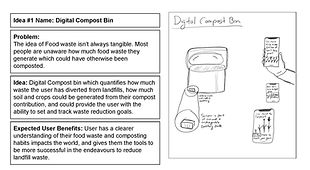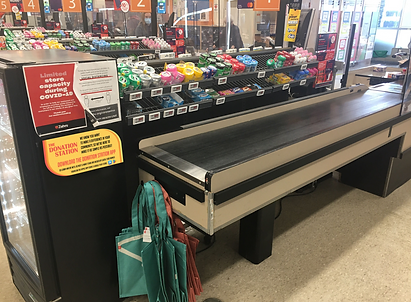

Date:
Jan. - Apr. 2021
Team:
Jordan Krueger, Daniela Mihajlovic, Salia Khalighmoeini, Jordan Migliazza
Course:
UXD5501 - Capstone 1
UXD5505 - Capstone 2
Contributions: Data Collection and User Interviews, Design Sprint, Affinity Mapping, Empathy Mapping, Journey Mapping, Personas, Idea Cards and Scorecards, Low-fi Wireframes, Service Blueprint Design, Prototype Development, Final Presentation

OBJECTIVE
COVID-19 has affected everyone. Food insecurity and inequality has risen over the last year and food banks are feeling stretched thin. As of 2021, it is estimated that 1 in 8 community members will face hunger. So far, 6 billion meals have been distributed to people in need and the demand is only increasing as food banks currently serve 55% more meals within the community than they did prior to the pandemic.
Our plan was to tackle the problem of food inequity and food waste by learning about the practices individuals who are food secure and food insecure, and identify areas of opportunity that could be used to generate accessible avenues to donate food.
PROCESS

We began our project with a Research Sprint, with the goal to learn as much as we could about food purchasers with little to no food insecurities as well as individual who are currently (or have recently experienced) food insecurity. We set out to conduct semi-structured interviews with participants ranging from university students to middle aged individuals, with each identifying themselves as either food secure or insecure.
From our interviews we realized that people who are experiencing food insecurity need more convenient access to healthy and nutritious grocery food items. While this group may be able to access Food Banks, sadly, a lot of the fresh, healthy foods that can be found at grocery stores don’t always make it to such donation facilities. In addition, we also learned that food secure shoppers would like a more efficient and transparent way to contribute to donation efforts in their communities.


Persona's and Empathy Maps were generated for both user groups to gain a better understanding of each demographic. Journey Maps were then created to plot out the stages each group takes to obtain and prepare food. This help us narrow down our problem space to grocery shopping, as it led us to explore the accessibility of fresh produce for people experiencing food insecurity, as well as the convenience and transparency required for food secure shoppers to donate.
The group then began to ideate using Brainwriting techniques to generate solutions, then progressively develop each idea by passing it to the next person to add more detail. Idea cards were created based on each of these ideas and were evaluated based on desirability (user value), Viability (business value), and feasibility.






Once we settled on which idea we wanted to work with, we began creating Storyboards to help visually represent the process of our solution.



END RESULT
In order to increase accessibility to fresh grocery items increase and their donations to facilities such as local food banks, we came up with the Donation Station! The Donation Station acts as a liaison partner between local food banks, donation facilities and grocery stores. It is stationed outside of the store where it provides a daily update on items that are currently in high demand. These items are also marked in the store and buyers can then choose to purchase these items for immediate donation.
Our proposed solution consists of a Physical Service Design and a Digital Design component in order to create a more holistic solution to our proposed problem space.
A Service Design Blueprint was also developed to give a better visual representation of the proposed service. The plan follows the customer on their journey as they navigate from their home to the store and back, fleshing out how they would interact with the various Frontstage touchpoints of the station. It also demonstrates some of the Backstage elements required to make the service functional.




